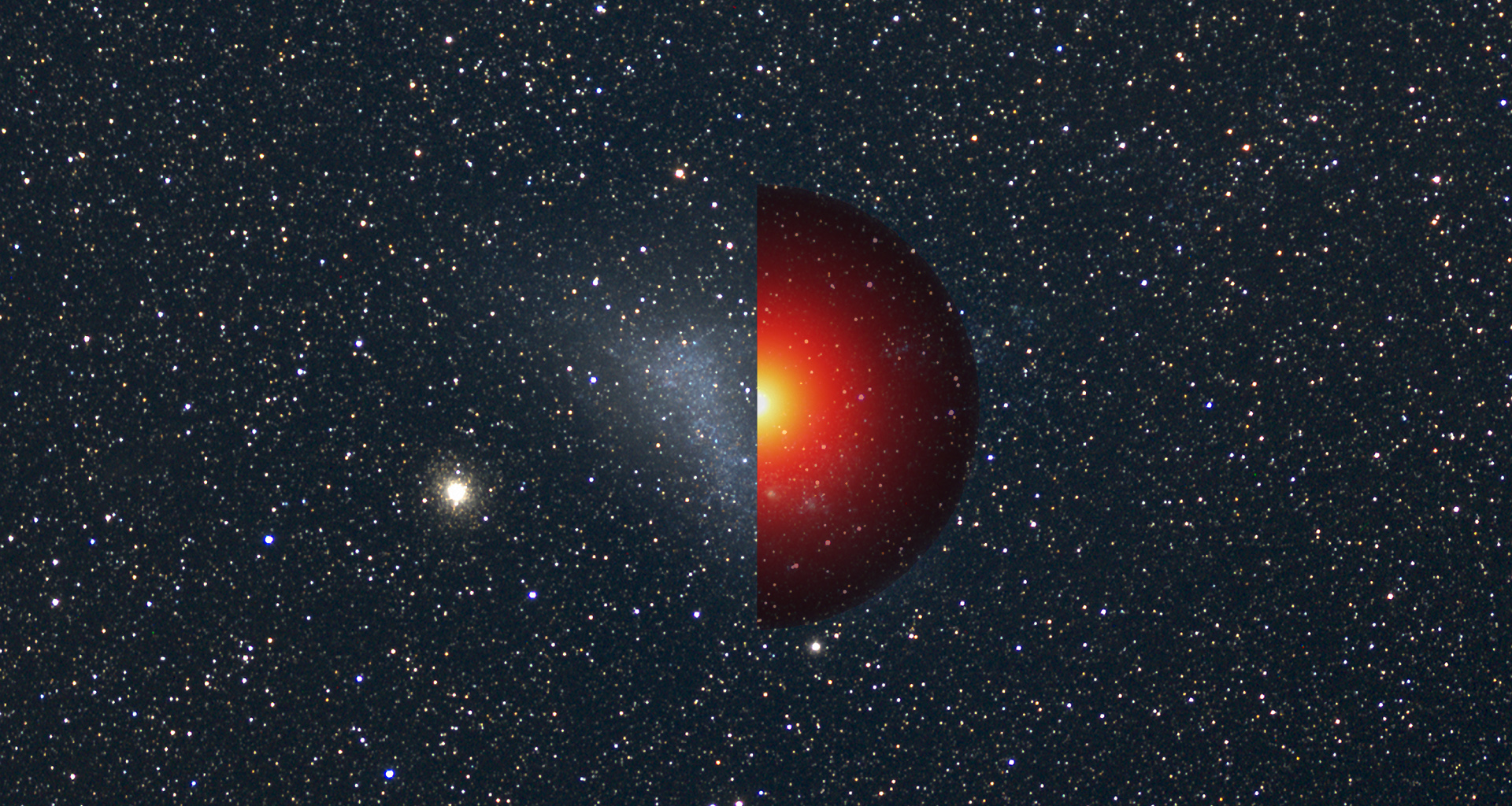Fermi Observations of Dwarf Galaxies Provide New Insights on Dark Matter
There's more to the cosmos than meets the eye. About 80 percent of the matter in the universe is invisible to telescopes, yet its gravitational influence is manifest in the orbital speeds of stars around galaxies and in the motions of clusters of galaxies. Yet, despite decades of effort, no one knows what this "dark matter" really is. Many scientists think it's likely that the mystery will be solved with the discovery of new kinds of subatomic particles, types necessarily different from those composing atoms of the ordinary matter all around us. The search to detect and identify these particles is underway in experiments both around the globe and above it.
Scientists working with data from NASA's Fermi Gamma-ray Space Telescope have looked for signals from some of these hypothetical particles by zeroing in on 10 small, faint galaxies that orbit our own. Although no signals have been detected, a novel analysis technique applied to two years of data from the observatory's Large Area Telescope (LAT) has essentially eliminated these particle candidates for the first time.
WIMPs, or Weakly Interacting Massive Particles, represent a favored class of dark matter candidates. Some WIMPs may mutually annihilate when pairs of them interact, a process expected to produce gamma rays — the most energetic form of light — that the LAT is designed to detect.
The team examined two years of LAT-detected gamma rays with energies in the range from 200 million to 100 billion electron volts (GeV) from 10 of the roughly two dozen dwarf galaxies known to orbit the Milky Way. Instead of analyzing the results for each galaxy separately, the scientists developed a statistical technique — they call it a "joint likelihood analysis" — that evaluates all of the galaxies at once without merging the data together. No gamma-ray signal consistent with the annihilations expected from four different types of commonly considered WIMP particles was found.
For the first time, the results show that WIMP candidates within a specific range of masses and interaction rates cannot be dark matter. A paper detailing these results appeared in the Dec. 9, 2011, issue of Physical Review Letters.
No one knows what dark matter is, but it constitutes 80 percent of the matter in our universe. By studying numerous dwarf galaxies — satellite systems that orbit our own Milky Way galaxy — NASA's Fermi Gamma-ray Space Telescope has produced some of the strongest limits yet on the nature of the hypothetical particles suspected of making up dark matter. Short, narrated video.
Poster image, and dark matter simulations credit: Simulation: Wu, Hahn, Wechsler, Abel(KIPAC), Visualization: Kaehler (KIPAC)
Watch this video on the NASAexplorer YouTube channel.
For complete transcript, click here.

Graph showing the combined limit and the galaxies observed.
Credit: NASA/GSFC/Axel Mellinger, Central Michigan University

Graph showing the combined limit and the galaxies observed, as well as all the individual observations.
Credit: NASA/GSFC/Axel Mellinger, Central Michigan University

Pie chart showing the approximate ratios of dark matter and visible matter in the universe.

This dwarf spheroidal galaxy in the constellation Fornax is a satellite of our Milky Way and is one of 10 used in Fermi's dark matter search. The motions of the galaxy's stars indicate that it is embedded in a massive halo of matter that cannot be seen.
Credit: ESO/Digital Sky Survey 2
For More Information
Credits
Please give credit for this item to:
NASA/Goddard Space Flight Center. However, please credit individual items as indicated above.
-
Animators
- Scott Wiessinger (USRA)
- Walt Feimer (HTSI)
- Donna Cox (AVL NCSA/University of Illinois)
- Ralf Kaehler (KIPAC/Standford)
-
Video editor
- Scott Wiessinger (USRA)
-
Narrator
- Scott Wiessinger (USRA)
-
Producer
- Scott Wiessinger (USRA)
-
Writers
- Scott Wiessinger (USRA)
- Francis Reddy (Syneren Technologies)
Release date
This page was originally published on Monday, April 2, 2012.
This page was last updated on Thursday, October 10, 2024 at 12:15 AM EDT.
Missions
This page is related to the following missions:Series
This page can be found in the following series:Tapes
The media on this page originally appeared on the following tapes:-
Dark Matter Limits
(ID: 2012036)
Monday, April 2, 2012 at 4:00AM
Produced by - Robert Crippen (NASA)
Datasets used
-
[Fermi: LAT]
ID: 216Fermi Gamma-ray Large Area Space Telescope (GLAST) Large Area Telescope (LAT)
This dataset can be found at: http://fermi.gsfc.nasa.gov
See all pages that use this dataset -
[Fermi]
ID: 687
Note: While we identify the data sets used on this page, we do not store any further details, nor the data sets themselves on our site.

![Watch this video on the NASA Goddard YouTube channel.Music credit: "Reborn" by Maksim Tyutmanov [PRS] and Victoria Beits [PRS]; Atmosphere Music Ltd PRS; Score Addiction; Killer Tracks Production Music](/vis/a010000/a012900/a012907/hubble_galaxy_without_dark_matter_thumbnail.png)


